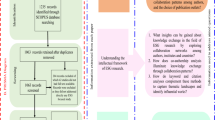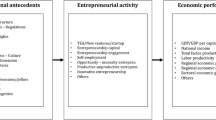Abstract
Real estate programs are ranked based upon page counts of articles published in three major real estate journals. The page counts are employed to capture many variations in the length of articles. For each author, his/her most recent affiliation is used to evaluate the school competitiveness of current faculty members rather than a perceived school reputation of the past. In this study, we find that top-tier schools in real estate research are not necessarily the most famous schools in economics and finance; progressive universities specializing in real estate research hold the top ranks. Furthermore, school competitiveness has changed substantially in the United States. The changes are mainly because of a mobility of faculty members. The results also show that U.S. institutions dominate research in real estate.

Similar content being viewed by others
Notes
Chan et al. (2008, Exhibit 5) attempted to identify the current affiliations of individual authors, but it was not directly used to construct school rankings.
Of course, a recent development of the Internet facilitates the search of individual faculty members without much difficulty, but the relative research productivity of current faculties is not available in public. This paper thus attempts to conduct the first systematic comparison of research-active scholars worldwide in the field of real estate.
One might object to this type of school ranking because all journals were equally weighted in quality. Quality-adjusted rankings in the literature employed ‘impact factors’ for top-tier economics journals (e.g. Conroy et al. 1995); different groups of quality journals were also used for a broad number of journals (e.g. Scott and Mitias 1996). But for the three specialty journals used here, their impact factors fluctuate year by year and, on balance, their impact factors may turn out to be nearly identical. Grouping quality journals is also subjective.
It is also noted that the research emphasis seemed to be reduced noticeably at the University of New South Wales in Australia. Even worse was the University of Technology Sydney in Australia. Further rankings below 20th are available upon request.
Most ranking papers in the real estate literature counted a single journal. See a brief review of the literature in “Introduction” for relevant discussion.
References
Borokhovich, K. A., Bricker, R. J., Brunarski, K. R., & Simkins, B. J. (1995). Finance research productivity and influence. Journal of Finance, 50, 1691–1717.
Chan, K. C., Hardin, W. G., III, Liano, K., & Yu, Z. (2008). The internationalization of real estate research. Journal of Real Estate Research, 30(1), 91–124.
Clauretie, T., & Daneshvary, N. (1993). A note on the ranking of real estate authors. Journal of Real Estate Research, 8(3), 445–453.
Conroy, M. E., Dusansky, R., Drukker, D., & Kildegaard, A. (1995). The productivity of economics departments in the U.S.: publications in the core journals. Journal of Economic Literature, 33(4), 1966–1971.
Coupe, T. (2003). Revealed performances: worldwide rankings of economists and economics departments, 1990–2000. Journal of the European Economic Association, 1, 1309–1345.
Dombrow, J., & Turnbull, G. K. (2000). Individual and institutional contributors to the Journal of Real Estate Finance and Economics: 1988–1999. Journal of Real Estate Finance and Economics, 21(2), 203–214.
Dombrow, J., & Turnbull, G. K. (2002). Individuals and institutions publishing research in real estate, 1989–1998. Journal of Real Estate Literature, 10(1), 45–92.
Dusansky, R., & Vernon, C. J. (1998). Rankings of U.S. economics departments. The Journal of Economic Perspectives, 12, 157–170.
Hardin, W. G., III, Liano, K., & Chan, K. C. (2006). Influential journals, institutions, and researchers in real estate. Real Estate Economics, 34(3), 457–478.
Heck, J. L. (2007). Establishing a packing order for finance academics: ranking of U.S. finance doctoral programs. Review of Pacific Basin Financial Markets and Policies, 10(4), 479–490.
Hogan, T. D. (1984). Economics departmental rankings: comment. The American Economic Review, 74, 827–833.
Jin, J. C. (2009). Asian university rankings in international and development economics: an application of Zipf’s law. Review of International Economics, 17(1), 137–143.
Jin, J. C., & Hong, J. H. (2008). East Asian rankings of economics departments. Journal of Asian Economics, 19(1), 74–82.
Jin, J. C., & Yao, L. (1999). Research productivity of the economics profession in East Asia. Economic Inquiry, 37(4), 706–710.
Klemkosky, R. C., & Tuttle, D. L. (1977). Institutional source and concentration of financial research. Journal of Finance, 32, 901–907.
Laband, D. N., & Piette, M. J. (1994a). The relative impacts of economics journals: 1970–1990. Journal of Economic Literature, 32, 640–666.
Laband, D. N., & Piette, M. J. (1994b). Favoritism versus search for good papers: empirical evidence regarding the behavior of journal editors. Journal of Political Economy, 102, 194–203.
Mantegna, R. N., & Stanley, H. E. (1995). Scaling behavior in the dynamics of an economic index. Nature, 376, 46–49.
Porter, M. E. (1990). The competitive advantage of nations. New York: Free.
Sa-Aadu, J., & Shilling, J. (1988). Ranking of contributing authors of the AREUEA journal by doctoral origin and employer: 1973–1987. Journal of the American Real Estate and Urban Economics Association, 16(3), 257–270.
Scott, L. C., & Mitias, P. M. (1996). Trends in rankings of economics departments in the U.S.: an update. Economic Inquiry, 34(2), 378–400.
Ulubasoglu, M. A., & Hazari, B. R. (2004). Zipf’s law strikes again: the case of tourism. Journal of Economic Geography, 4, 459–472.
Urbancic, F. B. (2007). Contributors to the journal of real estate research: the first twenty years. Journal of Real Estate Practice and Education, 10(1), 81–106.
U.S. Bureau of Labor Statistics. (2007). Automotive industries: concentration and change. Issues in Labor Statistics, BLS Summary 07-04.
Zipf, G. K. (1949). Human behavior and the principle of least effort. Cambridge: Addison-Wesley.
Acknowledgements
We wish to thank C.F. Sirmans (Editor), an anonymous referee of the journal, David Ahlstrom, Johnny Chan, and Charles Leung for their comments and suggestions. We also thank Olivia Yu, Ben Wong, Fey Zou, Melissa Liu, Sangyeon Cho, and Lihong Yun for their careful assistance in data collection. Remaining errors are our own.
Author information
Authors and Affiliations
Corresponding author
Rights and permissions
About this article
Cite this article
Jin, J.C., Yu, E.S.H. World Ranking of Real Estate Research: Recent Changes in School Competitiveness and Research Institutions. J Real Estate Finan Econ 42, 229–246 (2011). https://doi.org/10.1007/s11146-010-9256-1
Published:
Issue Date:
DOI: https://doi.org/10.1007/s11146-010-9256-1




